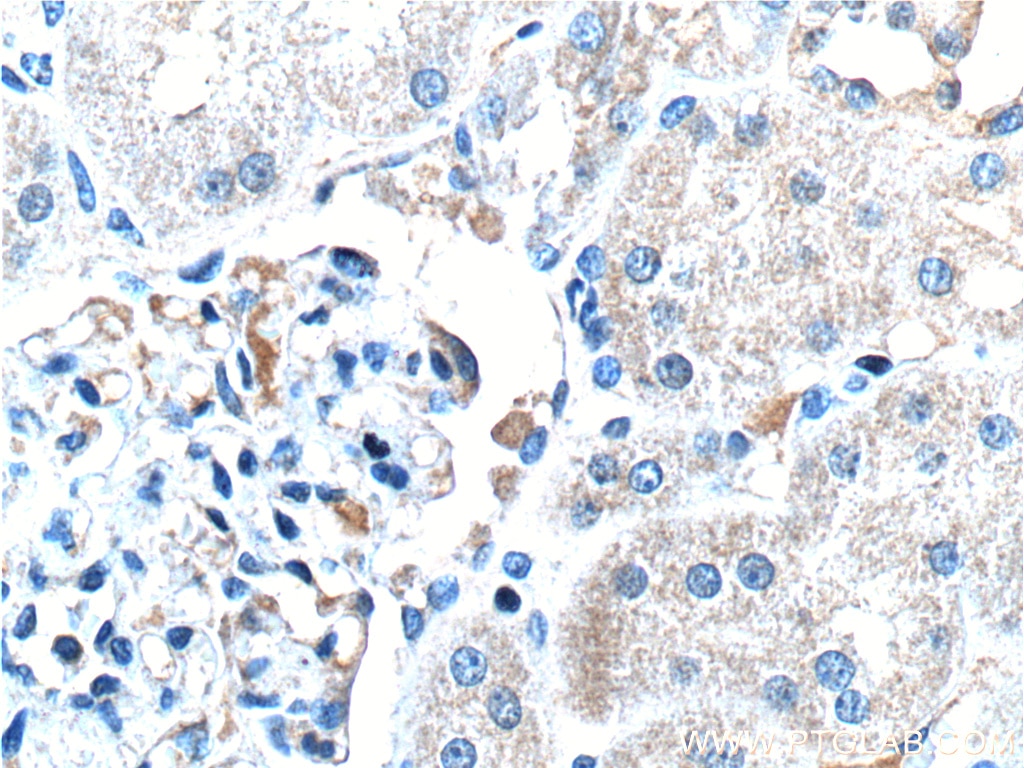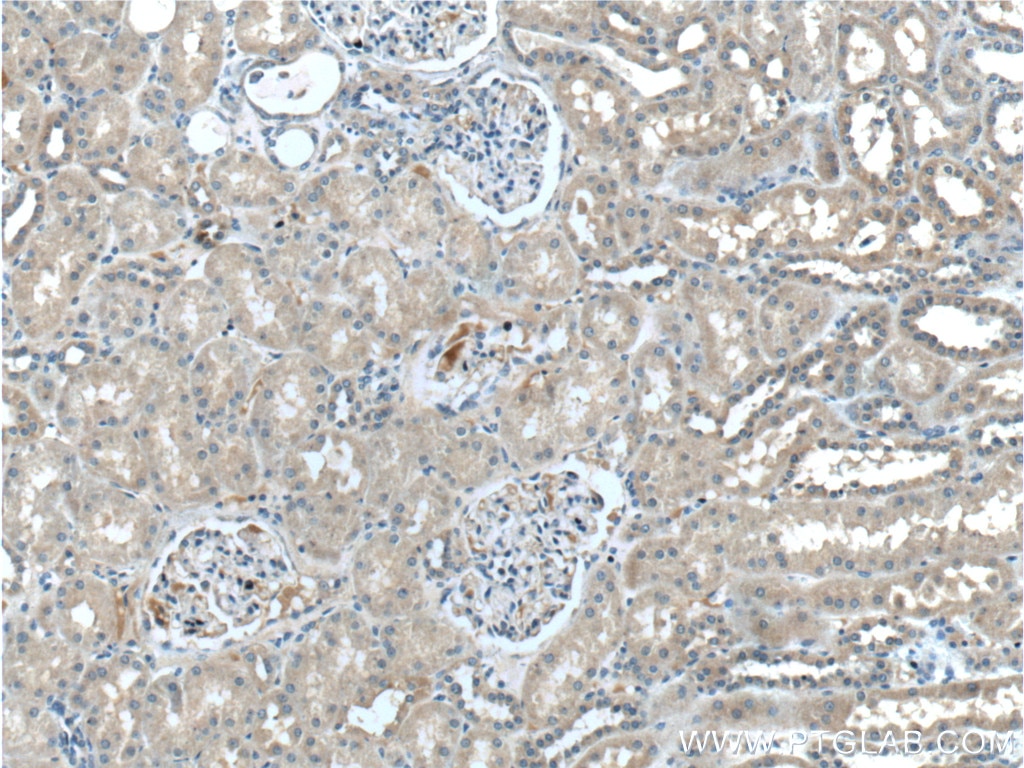Anticorps Polyclonal de lapin anti-MT1M
MT1M Polyclonal Antibody for IHC, ELISA
Hôte / Isotype
Lapin / IgG
Réactivité testée
Humain et plus (1)
Applications
WB, IHC, IF, ELISA
Conjugaison
Non conjugué
N° de cat : 17281-1-AP
Synonymes
Galerie de données de validation
Applications testées
| Résultats positifs en IHC | tissu rénal humain il est suggéré de démasquer l'antigène avec un tampon de TE buffer pH 9.0; (*) À défaut, 'le démasquage de l'antigène peut être 'effectué avec un tampon citrate pH 6,0. |
Dilution recommandée
| Application | Dilution |
|---|---|
| Immunohistochimie (IHC) | IHC : 1:50-1:500 |
| It is recommended that this reagent should be titrated in each testing system to obtain optimal results. | |
| Sample-dependent, check data in validation data gallery | |
Applications publiées
| WB | See 5 publications below |
| IF | See 2 publications below |
Informations sur le produit
17281-1-AP cible MT1M dans les applications de WB, IHC, IF, ELISA et montre une réactivité avec des échantillons Humain
| Réactivité | Humain |
| Réactivité citée | Humain, souris |
| Hôte / Isotype | Lapin / IgG |
| Clonalité | Polyclonal |
| Type | Anticorps |
| Immunogène | MT1M Protéine recombinante Ag11048 |
| Nom complet | metallothionein 1M |
| Masse moléculaire calculée | 61 aa, 6 kDa |
| Numéro d’acquisition GenBank | BC028280 |
| Symbole du gène | MT1M |
| Identification du gène (NCBI) | 4499 |
| Conjugaison | Non conjugué |
| Forme | Liquide |
| Méthode de purification | Purification par affinité contre l'antigène |
| Tampon de stockage | PBS with 0.02% sodium azide and 50% glycerol |
| Conditions de stockage | Stocker à -20°C. Stable pendant un an après l'expédition. L'aliquotage n'est pas nécessaire pour le stockage à -20oC Les 20ul contiennent 0,1% de BSA. |
Protocole
| Product Specific Protocols | |
|---|---|
| IHC protocol for MT1M antibody 17281-1-AP | Download protocol |
| Standard Protocols | |
|---|---|
| Click here to view our Standard Protocols |
Publications
| Species | Application | Title |
|---|---|---|
Autophagy Therapeutic targeting of the USP2-E2F4 axis inhibits autophagic machinery essential for zinc homeostasis in cancer progression. | ||
Environ Pollut Biotransformation of graphene oxide within lung fluids could intensify its synergistic biotoxicity effect with cadmium by inhibiting cellular efflux of cadmium. | ||
Clin Epigenetics Epigenetic reactivation of tumor suppressor genes with CRISPRa technologies as precision therapy for hepatocellular carcinoma | ||
ACS Nano Amplification of Metalloregulatory Proteins in Macrophages by Bioactive ZnMn@SF Hydrogels for Spinal Cord Injury Repair | ||
J Integr Med Aloin blocks the malignant behavior of lung squamous cell carcinoma cells and M2 macrophage polarization by modulating the NR3C2/MT1M axis | ||
Int J Mol Sci Specificity of the Metallothionein-1 Response by Cadmium-Exposed Normal Human Urothelial Cells. |



